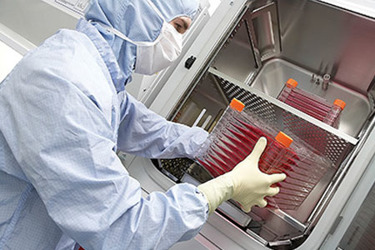Mechanical Movement EVokes Increase In Extracellular Vesicle Production In The Corning® HYPERStack® 12-Layer Cell Culture Vessel
By Amy C. Kauffman, Pilar Pardo, and Audrey Bergeron

Extracellular vesicles (EVs) are a population of particles naturally released from cells that are delimited by a lipid bilayer and cannot replicate. EVs are secreted by all cell types, mediating intercellular communication with cargo that delivers a distinct molecular message composed of protein, lipids, nucleic acids, and sugars in a unique pattern transmitted to recipient cells to begin a response protocol. Notably, naïve EVs from stem cells can possess inherent tissue repair promoting properties, and with their small biological design, may be an enticing alternative to whole stem cell therapies. Despite the potential advantages that EVs may have over whole stem cell therapies, challenges remain in optimizing EV manufacturing that need to be overcome to ensure EV therapeutics translate from research to the clinic. Here we demonstrate that a Corning HYPERStack 12-layer cell culture vessel can be used to produce seven trillion high quality EVs from mesenchymal stem cells (MSCs). Furthermore, we show that mechanical movement of the Corning HYPERStack vessel leads to a 4-fold increase in EV production compared to static culture.
Get unlimited access to:
Enter your credentials below to log in. Not yet a member of Cell & Gene? Subscribe today.
